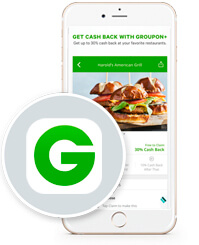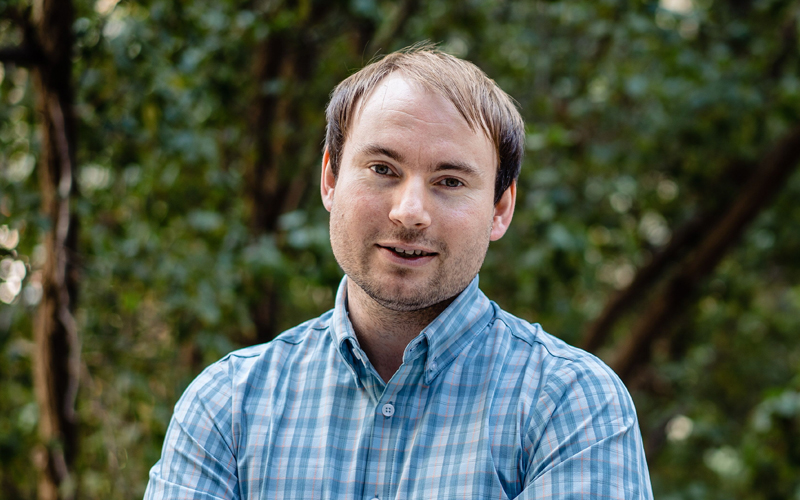Q&A with Kurt
This Q&A reflects Kurt's time as Mobile Marketing Manager at Groupon. Currently, Kurt is Sr. Marketing Manager - Search, Display, Social at Amazon.
Kurt Geater was formerly a Mobile Marketing Manager at Groupon, the 800lb shopping app gorilla, where his focused on new user acquisition for the app. His first marketing role was at the Austin American-Statesman newspaper in Austin, TX, working as a Targeted Acquisition and Retention Analyst where he ran direct mail marketing and aided in their print-to-mobile migration.
While Kurt loved A/B testing direct mail campaigns, he was frustrated with the time it took to evaluate performance. As a result, he transitioned to a demand side platform (DSP), Audience Science, where he ran mobile, display, and video campaigns for their client, Procter and Gamble.
In your own words, tell us about the apps that you manage?
Before I started working at Groupon, I would use the Groupon app almost every day to see if there were any great discounts on restaurants, events, and things to do in my area. It is one of the best apps I use, and I love to casually browse for deals while waiting in line or commuting to work. I guess you can say I’m a fan.
I use the Groupon app to find deals on things such as beauty, spa, customizables, toys, video games, home decor, and almost every other category you can imagine. My favorite deal is for a place called Jones’ Barbecue in Seattle where you can get $50 worth of BBQ for only $30. It’s a steal!
How did you get started in mobile marketing?
I ran direct mail campaigns at the Austin American-Statesman newspaper in Austin, TX. We sent out flyers trying to get users to subscribe to our product and were always testing different discounts, creative, and copy. One of the most rewarding feelings came when we would send out a new mail piece and see a lift in our overall performance due to a new discount, creative, or piece of copy we were A/B testing.
It was during this time that I knew I liked working in marketing. It was rewarding. But I also knew I wanted to work in a space where evaluating performance was more instantaneous than with direct mail. With direct mail, it takes months to track performance, but with mobile marketing, you can optimize on the fly and get results in near real time. After I left the newspaper, I transitioned to a DSP called Audience Science where I ran display, mobile, and video campaigns for our client Proctor and Gamble. After working there for two years, I eventually ended up at Groupon where I now focus specifically on new user acquisition for the mobile app.
What do you like most about mobile marketing?
I love how dynamic and cutting-edge the mobile app industry is. Everyday, it seems like there is a new piece of technology that needs to be implemented, a new network that needs testing, or a new, innovative way of improving performance. There is nothing worse than working in a stale industry that has “had its day”. With mobile app marketing, I feel like I am always on the lookout for the “next big thing”. It is also great to work in a field that is growing and will be relevant for decades to come.
What does it take to succeed in mobile marketing?
A skeptical mindset and the determination to drive projects to completion.
By skeptical mindset, I mean that one has to have the willingness to dive into every piece of performance data they report on and never take anything at first glance. There have been numerous times where I have tested a partner that looks amazing in terms of efficiency, only to find out that the mean-time-to-install was extremely high, our MMP was counting “views” as “clicks”, or we were unknowingly bidding on our own brand terms.
In terms of driving projects to completion, one has to have the patience to consistently push on Product and Engineering teams in order to get “all hands on deck” and drive initiatives to completion.
What does a quality mobile user look like to you?
At the end of the day, of course, it’s a user that drives overall revenue for the business. An ideal user would be someone who makes a first purchase and has a high downstream purchase frequency.
I would also say that there are more qualitative, human elements that define a quality user such as do they get enjoyment out of using the brand in their day-to-day lives? Do they provide feedback about their experience with the app (both positive and negative)? Or are they willing to share their thoughts on the brand via word of mouth or social media?
What strategies work best to convert installs into engaged app users?
First and foremost, it comes down to relevance. If an app marketer can show a user relevant content from the point of install, then there is a higher likelihood the user will make their first purchase and continue to make further purchases downstream. For example, if I download the Groupon app, I would love to see deals that are in my neighborhood, are relevant to my interests (in this case food and drink), or are for events that my friends are partaking in. If I immediately download an app and am bombarded with irrelevant products, I am more likely to uninstall and never end up converting.
Great consumer analytics and product teams are vital for creating the best user experience and promoting frequency of purchases downstream.
In the past year, what is one tip you can share which made the biggest performance difference with UA or re-engagement of your app?
Diversify your portfolio of channels for both UA and re-engagement. Every channel has a point of diminishing returns where for every additional dollar spent, the amount of value you can derive from the channel will decrease due to the pool of users getting smaller and smaller.
That said, the more channels you are able to get working efficiently, the better. This will not only help with potential reach of your app, but it will also provide you with other areas to shift your budget if a channel gets hyper-competitive during a given season. This will also help prevent ad fatigue for potential users and allow you to keep your user ad frequency at a healthy level while still being able to spend your full budget. Always keep testing. You never know what may end up being the next big thing.
How do you stay ahead of changes in technology?
The best way to stay ahead of new technology is to actively participate in conferences and network as much as you can with other app marketers. Whenever I attend a mobile conference, I am always on the lookout for the next big thing that will help increase conversions. By networking, you never know what tidbits of information you may pick up regarding new technologies, optimization tips, or creative insights that may drive performance for your app.
What do you see as the next big thing in mobile marketing?
Most people would say multi-touch attribution, but I think that is on the top of every app marketers’ wish-list. That said, I think 5G cellular network technology is something that every company should be embracing and ready for.
As of today, 5G is only available on select devices and in limited coverage areas, but once 5G is available on all devices, we will see mobile app shopping and usage become even more prevalent than it is today. Increased network speeds will improve the overall click-to-download speed (no more waiting ages for your app to download in the app store), improve the convenience of shopping on mobile devices, and streamline everything in terms of the mobile user experience. The revenue implications of all this could be huge for mobile app focused businesses. My hunch is once 5G becomes more omnipresent, more users will upgrade their devices so cross-device attribution will become even more of a necessity than it is today.
What advice can you offer to help marketers combat mobile ad fraud?
If you are buying in-app inventory, make sure to check the click-to-install ratio of every Site ID or app that you are downloading from. Yes, site IDs can change over time, but this should not stop you from constantly checking. If you’re seeing thousands of clicks for every single download, that may be indicative of click-spamming and you should consider blacklisting the app.





















